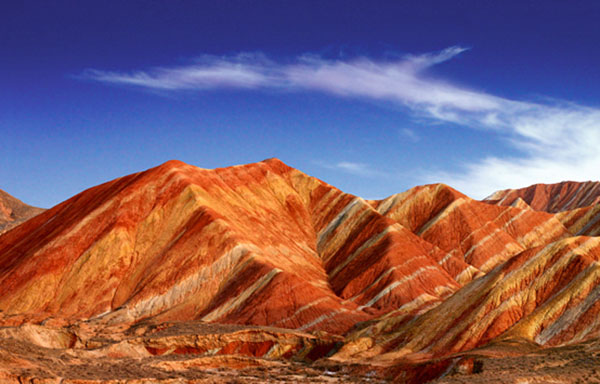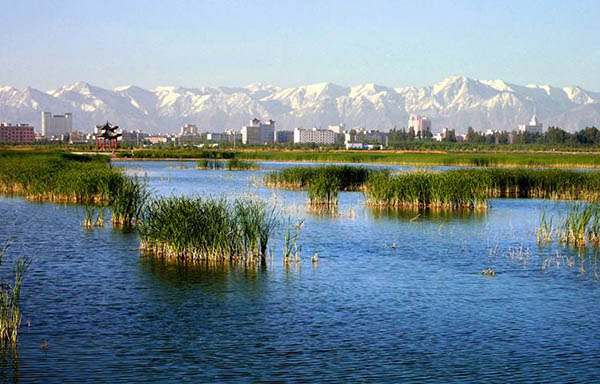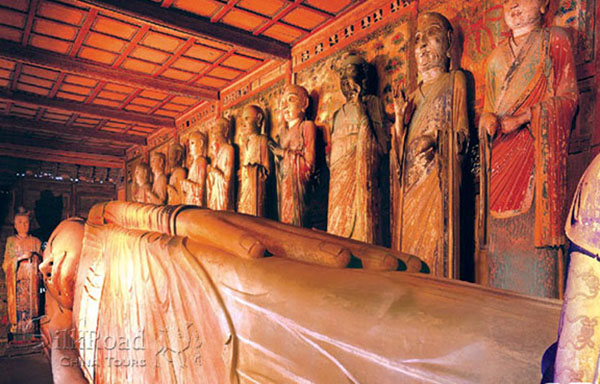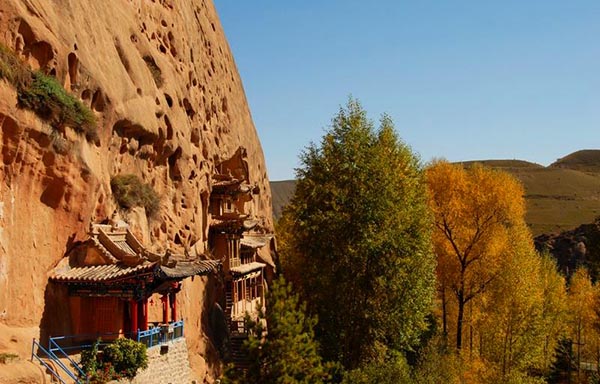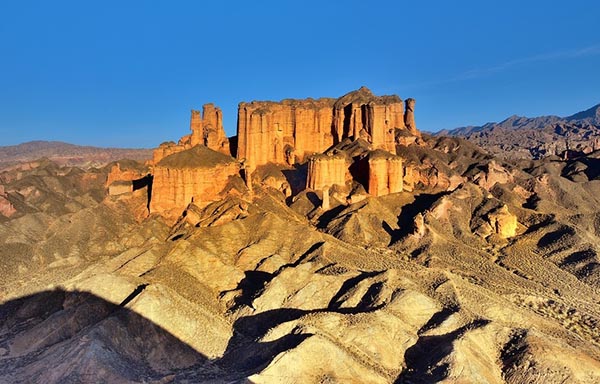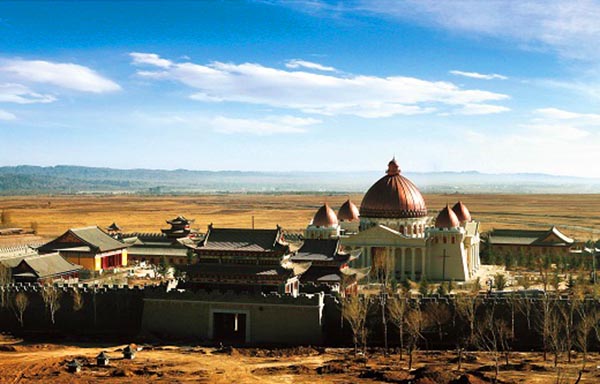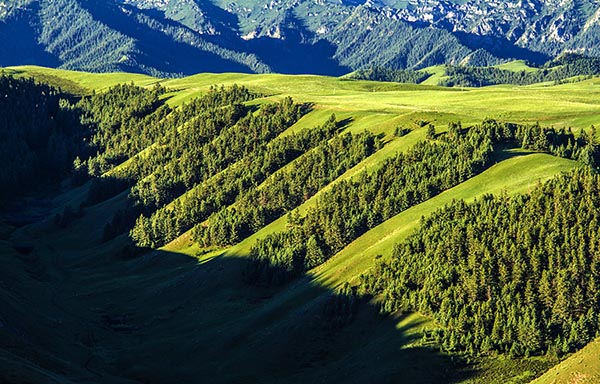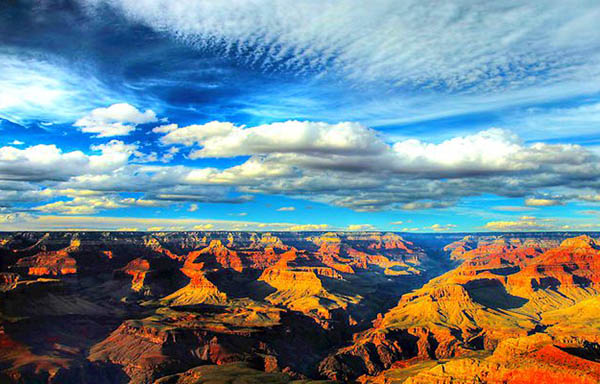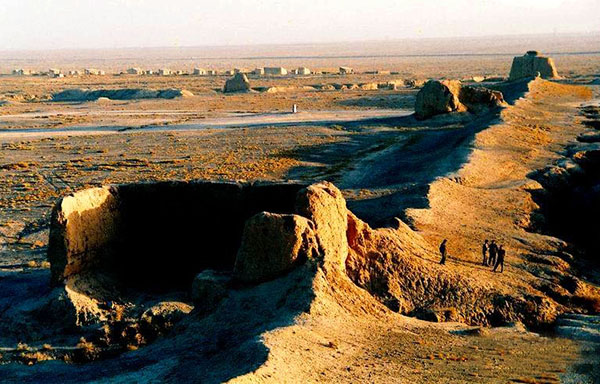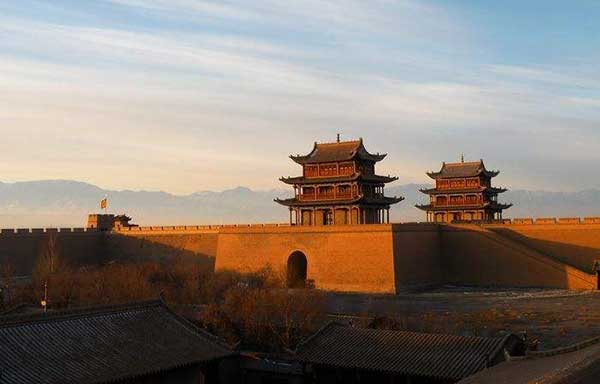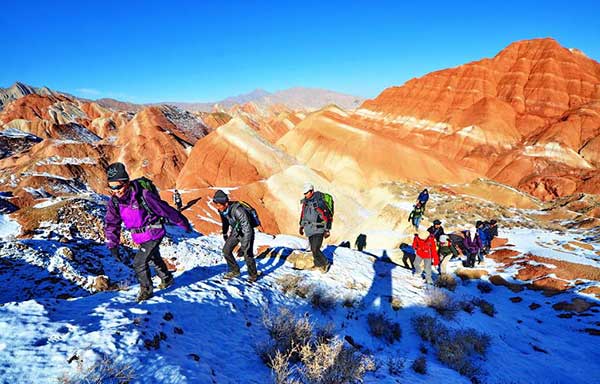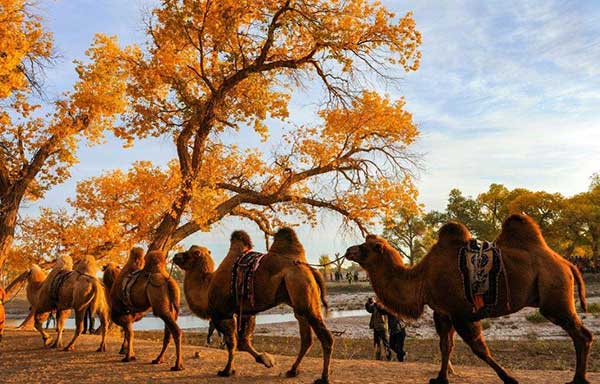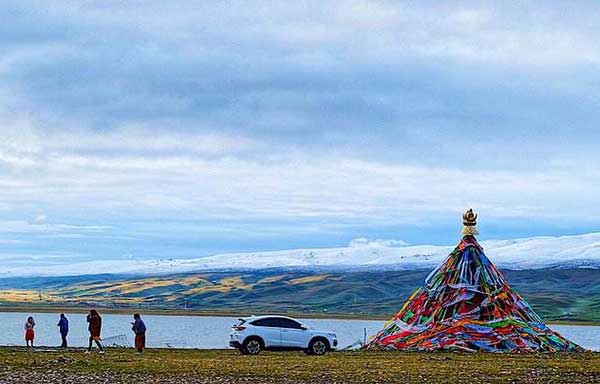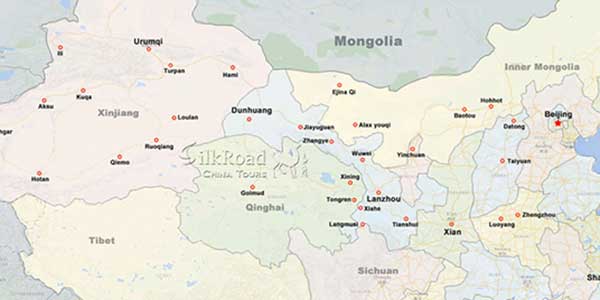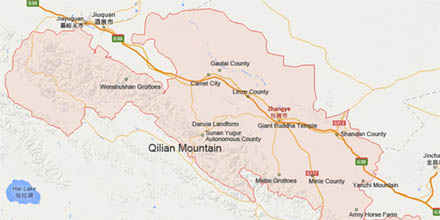 Zhangye, which is also called Ganzhou, lies in the middle of Hexi Corridor. It is an important part of the ancient Silk Road and was nominated as the national historical and cultural city and China Excellent Tourism City.
Zhangye, which is also called Ganzhou, lies in the middle of Hexi Corridor. It is an important part of the ancient Silk Road and was nominated as the national historical and cultural city and China Excellent Tourism City.
Zhangye has enjoyed the fame as "golden zhangye", for its abundant products and beautiful scenery. The city seats on the upper reach of the black river - the second largest inland river in china. It has Enormous acreages of field, flat ground and fertile soil, produce rice, wheat, rape,and flax. Among them the wujiang rice has enjoyed name throughout country. Zhangye produce delicious fruit such as Chinese date, apple, peach and grapes. For the quality and quantity of its products, Zhangye is now one of the most important commodity grain, fruits and vegetables base in China.
Zhangye was established in 121BC, when the emperor Wudi of Han dynasty resolved to fight his enemy to the north and expand the empire. He named the city zhangye, "Zhang" in Chinese means expand. "Ye" means armpit in Chinese, So the emperor looks his empire as a giant and the city's location is just like the armpit of the giant. The name Zhangye well indicates his ambition to conquer the western region.
The area is on the frontier of China Proper, protecting it from the nomads of the northwest and permitting its armies access to the Tarim Basin. During the Han Dynasty, Chinese armies were often engaged against the Xiongnu in this area. It was also an important outpost on the Silk Road. Before being overrun by the Mongols, it was dominated by the Uyghurs from at least the early 10th century. Its relation to the larger Uyghur state of Qocho is obscure, but it may have been a vassal.
The Mongol Emperor Kublai Khan is said to have been born in the Dafo Temple, Zhangye, now the site of the longest wooden reclining Buddha in China. Marco Polo's journal states that he spent a year in the town during his journey to China.
The pine forests of the Babao Mountains (part of the Qilian Mountain range) formerly regulated the flow of the Ruo or Hei Shui, Ganzhou's primary river. By ensuring that the melt waters lasted throughout the summer, they avoided both early flood and later drought for the valley's farmers. Despite reports that they should thus be protected in perpetuity, an imperial official in charge of erecting the poles for China's telegraph network ordered them cleared in the 1880s. Almost immediately, the region became prone to flooding in the summer and draught in the autumn, arousing local resentment.
Christian missionaries arrived in 1879, after Suzhou was found to be too hostile for their settlement.
Zhangye covers five counties and one city. They are Linze County, Gaotai County, Shandan County, Minle County, Sunan County and Zhangye City. It occupies 41,000 square kilometers and has a population of 1.31 million.
Zhangye has hosted a round of the Chinese Rally Championship (CRC) since 2011. Held on specially constructed roads across the deserts north and to the south of the city. The event attracts over 100 entries regularly, including international foreign drivers. A stadium for side-by-side super special stages has also been constructed.
Zhangye belongs to a continental climate. The weather is often dry and seldom rains. The annual average temperature is 6 centigrade. January is the coldest month and July is the hottest month. From June to September is the best time for tourist to travel.
Transportation
Zhangye Train Station is located 8 km north east of the city. It’s very convenient to take a bus or taxi to the city. There are many trains leave and arrive at Zhangye each day, but each train only has several tickets for sale. If you want to take train from Zhangye you should book the ticket 60 days in advance. Tel: 0936-8431804
Zhangye West Train Station also called Zhangye Speed Train Station is located to the south-west of Zhangye city. The speed trains start from Lanzhou or Urumqi can well connect the important cities such as Wuwei, Jiayuguan, Jiuquan and Turpan along the Silk Road.
Zhangye airport is a Military and Civil Airport, which located 24km south east of the city. There are only a few flights to several major cities, such as Lanzhou, Xian, Dunhuang, Urumuqi.
Tel: 0936-8889778
Weather

Zhangye belongs to a continental climate. The weather is often dry and seldom rains, with the average sunlight of over 3000 hours annually. The annual average temperature is 6 centigrade. January is the coldest month and July is the hottest month. From June to September is the best time for tourist to travel.
Rainfall: annual average rainfall 104 millimeters-459 millimeters (4 inches-18 inches)
Attractions in Zhangye
Related Tours
General Information
Alias: Ganzhou
Area: 40874 sq km
Location: Gansu
Airport: 24 km from city
Train Station: 6 km from city
Population: 1,310,000
Relevant blogs
-
How did the name of Tianshui in Gansu come about?
The name Tianshui is very pleasant to the ear, and it reminds one of that exquisitely beautiful verse, "After getting drunk, one doesn't know if the sky is in
-
The 8th Silk Road Hotel Festival was successfully
On December 27th, the "8th Silk Road Hotel Festival" grandly opened at the Yujing International Hotel in Zhangye. This hotel festival gathered industry experts,
-
The Karez Irrigation System in Turpan has been sel
On September 3rd, at the 75th Executive Council Meeting of the International Commission on Irrigation and Drainage held in Sydney, Australia, the 2024 (11th bat
-
What is the connection between "dragons" and "s
In traditional Chinese culture, the snake has a dual identity of auspiciousness and danger. Ancient people believed that the snake not only possesses divine cha
-
Endangered Przewalski's Horses Spotted at Dunhuan
<p>In early February, a group of special "visitors"—the Przewalski's horses—appeared at the Dunhuang Yumen Pass scenic area in Gansu Province, a U
-
The Fourth Dunhuang Cultural Tourism Supplier Conf
On the morning of February 18th, the Fourth Dunhuang Cultural Tourism Supplier Conference in Northwest China commenced at the Dunhuang International Convention

